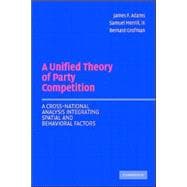
What is included with this book?
| List of Tables and Figures | x | ||||
| Acknowledgments | xvii | ||||
|
1 | (14) | |||
|
1 | (4) | |||
|
5 | (1) | |||
|
6 | (4) | |||
|
10 | (5) | |||
|
15 | (13) | |||
|
15 | (1) | |||
|
16 | (3) | |||
|
19 | (4) | |||
|
23 | (3) | |||
|
26 | (2) | |||
|
28 | (24) | |||
|
28 | (3) | |||
|
31 | (9) | |||
|
40 | (6) | |||
|
46 | (6) | |||
|
52 | (20) | |||
|
52 | (1) | |||
|
53 | (4) | |||
|
57 | (6) | |||
|
63 | (4) | |||
|
67 | (3) | |||
|
70 | (2) | |||
|
72 | (22) | |||
|
72 | (1) | |||
|
73 | (4) | |||
|
77 | (2) | |||
|
79 | (6) | |||
|
85 | (8) | |||
|
93 | (1) | |||
|
94 | (23) | |||
|
94 | (2) | |||
|
96 | (3) | |||
|
99 | (3) | |||
|
102 | (3) | |||
|
105 | (6) | |||
|
111 | (5) | |||
|
116 | (1) | |||
|
117 | (15) | |||
|
117 | (3) | |||
|
120 | (3) | |||
|
123 | (7) | |||
|
130 | (2) | |||
|
132 | (20) | |||
|
132 | (1) | |||
|
133 | (1) | |||
|
134 | (8) | |||
|
142 | (2) | |||
|
144 | (3) | |||
|
147 | (3) | |||
|
150 | (2) | |||
|
152 | (18) | |||
|
152 | (2) | |||
|
154 | (2) | |||
|
156 | (4) | |||
|
160 | (4) | |||
|
164 | (4) | |||
|
168 | (2) | |||
| 10 The Consequences of Voter Projection: Assimilation and Contrast Effects | 170 | (14) | |||
|
170 | (1) | |||
|
171 | (11) | |||
|
182 | (2) | |||
| 11 Policy-Seeking Motivations of Parties in Two-Party Elections: Theory | 184 | (17) | |||
|
184 | (3) | |||
|
187 | (1) | |||
|
188 | (7) | |||
|
195 | (4) | |||
|
199 | (2) | |||
| 12 Policy-Seeking Motivations of Parties in Two-Party Elections: Empirical Analysis | 201 | (26) | |||
|
201 | (3) | |||
|
204 | (4) | |||
|
208 | (4) | |||
|
212 | (10) | |||
|
222 | (3) | |||
|
225 | (2) | |||
| 13 Concluding Remarks | 227 | (14) | |||
|
227 | (5) | |||
|
232 | (2) | |||
|
234 | (5) | |||
|
239 | (2) | |||
| Appendix 1.1 Literature Review: Work Linking Behavioral Research to Spatial Modeling | 241 | (4) | |||
| Appendix 2.1 Alternative Statistical Models of Voter Choice | 245 | (2) | |||
| Appendix 2.2 Controversies in Voting Research: The Electoral Impact of Party Identification | 247 | (4) | |||
| Appendix 2.3 Relationship between the Unified Discounting Model and the Directional Model of Rabinowitz and Macdonald | 251 | (3) | |||
| Appendix 3.1 Spatial Models That Incorporate Valence Dimensions of Candidate Evaluation | 254 | (4) | |||
| Appendix 4.1 Uniqueness Theorem and Algorithm for Computing Nash Equilibria | 258 | (5) | |||
| Appendix 4.2 Proof of Theorem 4.1 | 263 | (2) | |||
| Appendix 4.3 Simulation Analysis and an Approximation Formula for Nash Equilibria | 265 | (3) | |||
| Appendix 4.4 Derivations of Formulas Relating Electoral Factors to the Shrinkage Factor, ck | 268 | (2) | |||
| Appendix 6.1 Equilibria for Outcome-Oriented Motivations: The Kedar Model | 270 | (5) | |||
| Appendix 7.1 Proof of Lemma 7.1 | 275 | (2) | |||
| Appendix 7.2 Derivations for the Unified Turnout Model | 277 | (2) | |||
| Appendix 8.1 Coding and Model Specifications | 279 | (3) | |||
| Appendix 8.2 Alternative Turnout Models | 282 | (5) | |||
| Appendix 11.1 Proof of Theorem 11.1 | 287 | (2) | |||
| Appendix 11.2 Empirical Estimation of the Mean and Standard Deviation of Valence Effects | 289 | (4) | |||
| References | 293 | (14) | |||
| Index | 307 |
The New copy of this book will include any supplemental materials advertised. Please check the title of the book to determine if it should include any access cards, study guides, lab manuals, CDs, etc.
The Used, Rental and eBook copies of this book are not guaranteed to include any supplemental materials. Typically, only the book itself is included. This is true even if the title states it includes any access cards, study guides, lab manuals, CDs, etc.